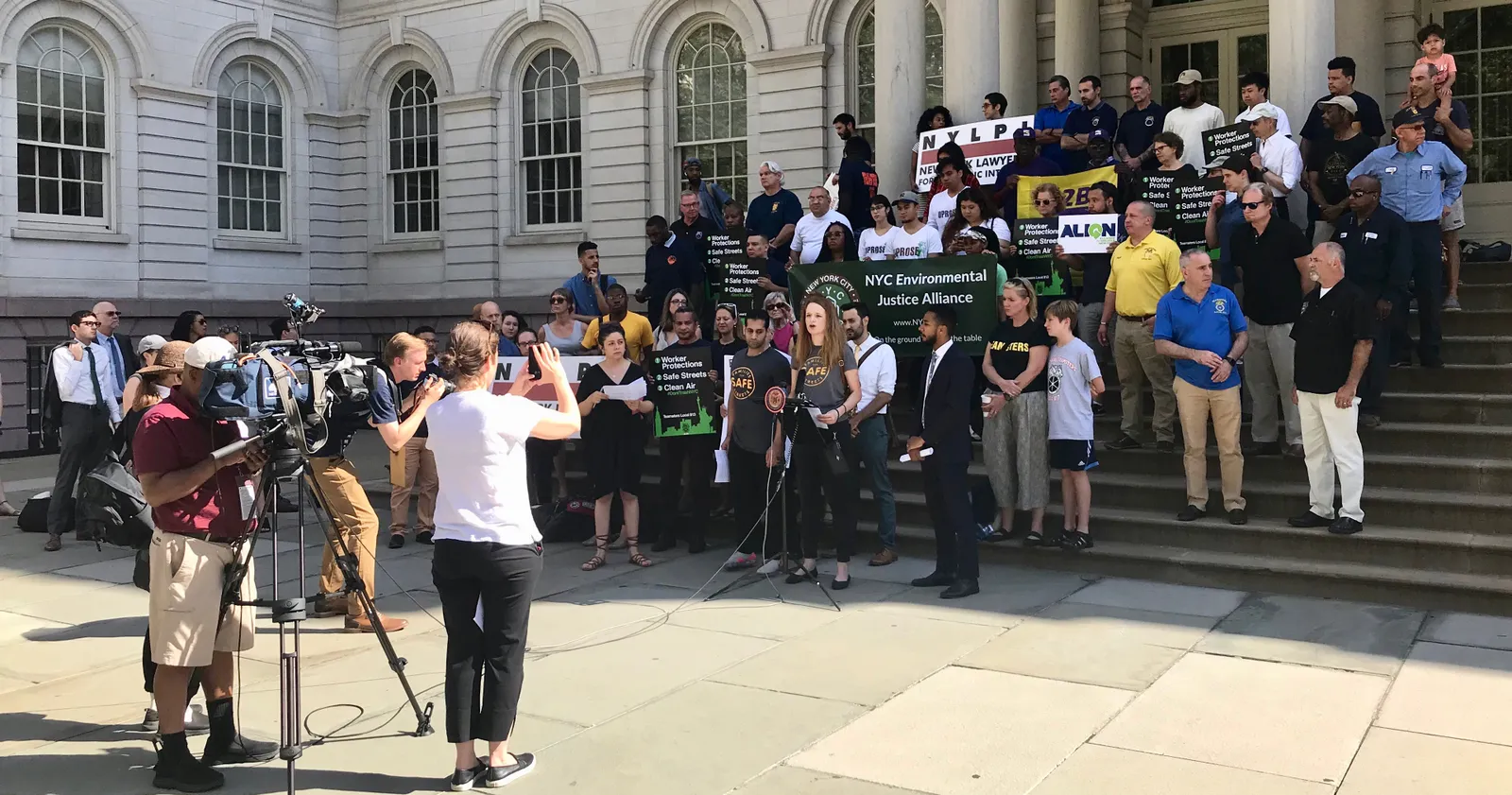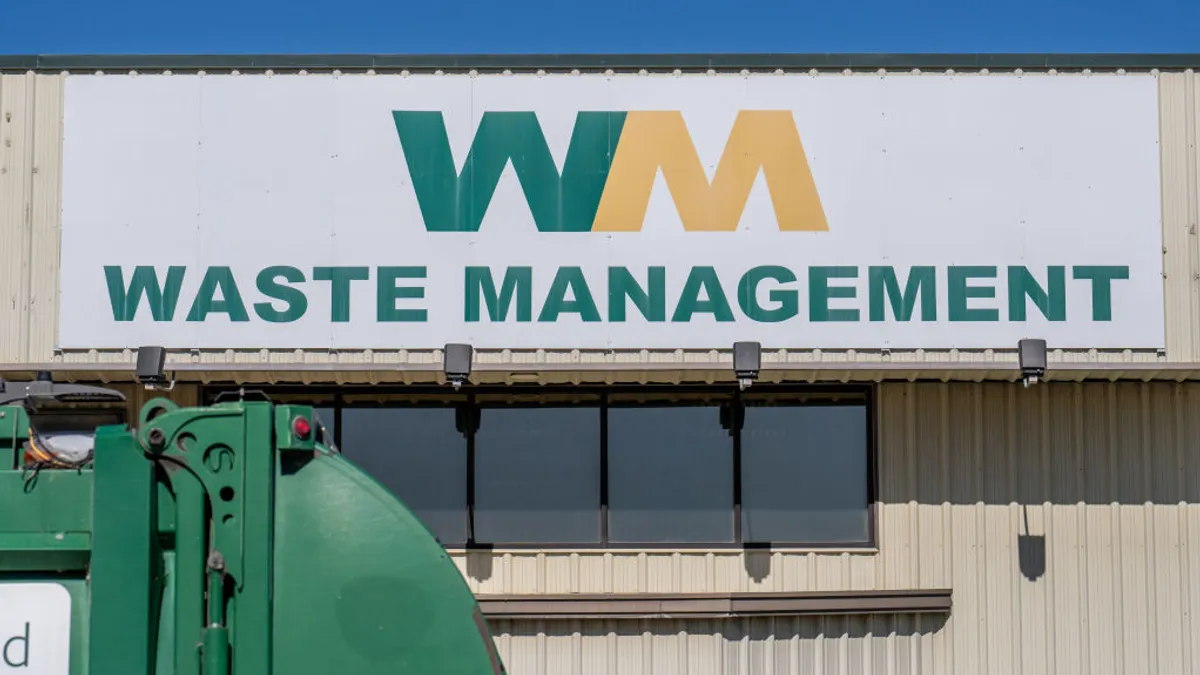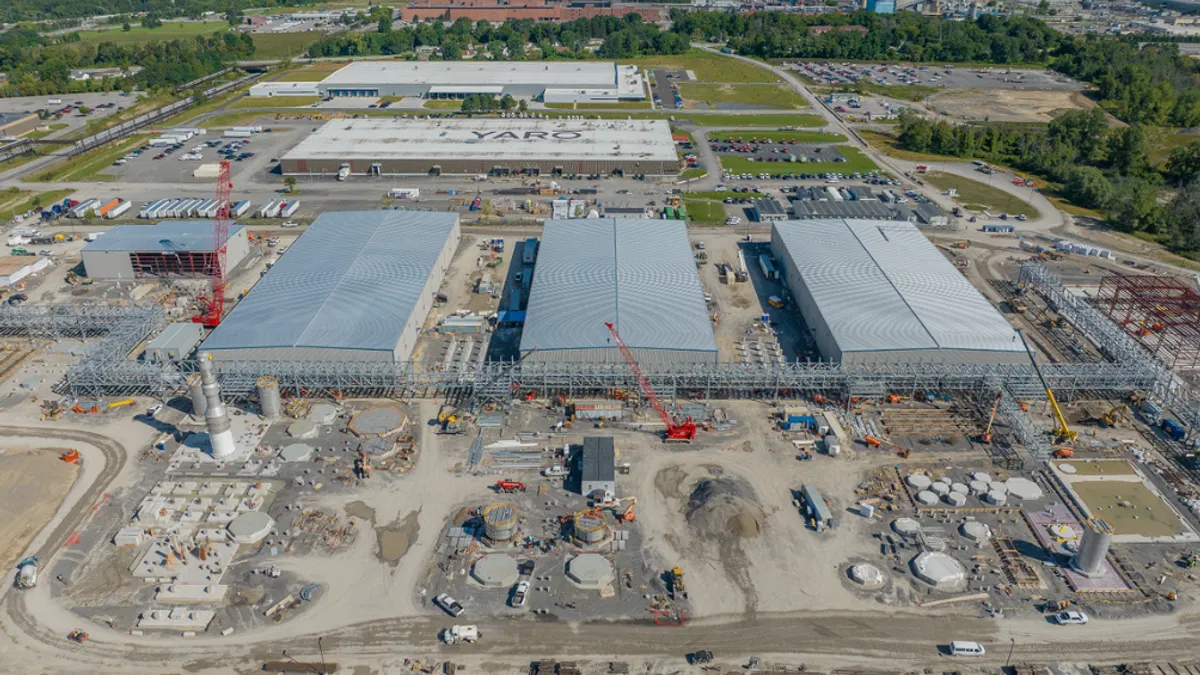New York’s recent announcement of 65 contracts for companies to manage commercial waste in the city was a major development. Now comes the hard part — setting up the system by 2026.
Shifting from an open market system in which licensed haulers can operate anywhere in the five boroughs to one in which select haulers can only operate in certain zones will be complex. Many questions remain about how this will be implemented, as well as how it will lead to desired environmental and safety benefits.
The city’s Department of Sanitation declined an interview and further details at this time. The New York City Council’s sanitation committee is expected to address this topic in future budget and oversight hearings, but dates have not been set.
In the meantime, here are five important areas to watch as the process gets underway.
Initial reactions
Unlike other waste-related announcements, neither DSNY or Mayor Eric Adams have held press conferences on this issue in recent years. Aside from a supportive statement by the New York League of Conservation Voters after the awards, environmental and business groups have largely been quiet as well.
Labor and environmental groups involved in the Transform Don’t Trash Coalition that were very vocal proponents of the 2019 law behind this system have essentially been silent since the contracts were announced. Teamsters Local 813, a member of the coalition, had once seen this as a way to regrow its presence. Laborers Local 108, not a member of the coalition, had been vocal with its own concerns about New York’s system. Neither union responded to requests for comment.
Brooklyn Borough President Antonio Reynoso, the primary sponsor of the 2019 law, released a statement hailing movement on the program but not commenting on the selections directly.
Some observers attribute this to DSNY not yet releasing a full list of subcontractors, as well as ripple effects from a Feb. 6 Crain’s New York story about pending violations by an awardee.
New York City regulates the mechanics of waste collection more closely than many other markets and violations from the Business Integrity Commission are not uncommon, but some observers consider the large number of alleged violations by Cogent Waste Solutions to be more notable. The article also mentioned that other companies, including the system’s two largest awardees, had received violations in the past.
“We are currently reviewing the material to assess each alleged violation,” said Cogent spokesperson David Vermillion via email. “Cogent takes this matter seriously. Our service to the citizens of New York is important to us, and we are in active conversation with BIC to discuss the details of its allegations. We are confident that we can resolve this matter expeditiously.”
Council Member Shaun Abreu, newly appointed chair of the sanitation committee, said on X that this would be addressed at an oversight hearing. “Who we let manage our waste is a critical safety and consumer protection issue, and the public should know how these decisions were made,” he wrote the day of the story. Abreu’s office did not respond to a request for further comment or a date for the hearing.
Joshua Goodman, DSNY’s deputy commissioner of public affairs, said that proposals from all vendors with an active BIC license were eligible for consideration.
“Each of the selected carters is licensed by BIC, and revocation of a carter’s BIC license is grounds for immediate termination of its ability to operate within the Commercial Waste Zones program. Additionally, DSNY has the authority to require an independent monitor for any carter at any time it deems necessary,” he said via email.

Fleet plans
Updated calculations based on awardees’ plans reaffirmed that the program will still lead to a 50% reduction in vehicle miles traveled by commercial waste haulers. Midtown Manhattan, which currently sees many companies’ trucks crisscrossing the area on a given night, is projected to see an even greater reduction of 70%.
These calculations are not expected to consider the potential for haulers to utilize DSNY’s marine or rail transfer stations, a long-discussed idea. Council Member Sandy Nurse, former sanitation chair, recently reintroduced legislation calling on the agency to make that possible.
Advocates had also been optimistic about the potential to shift away from diesel vehicles. In a template contract, DSNY included language asking for fleets to have at least 50% “zero emissions vehicles” by 2030 and 100% by 2040. How soon any of those vehicles could hit the road remains to be seen. DSNY itself has ordered at least seven electric vehicles.
Brian D’Amico, executive chairman of Interstate Waste Services, said the company’s subsidiary Action Environmental has placed “substantial new orders” for various types of equipment, though still hasn’t received an electric truck it ordered a long time ago.
Nino Tristani, vice president of Cogent, said via email the company was “actively working on implementing zero-emission vehicles” and “timelines may vary based on various factors such as availability, infrastructure readiness, and technology development.” Mr. T Carting said it needed to see more development of charging infrastructure and the ability for a truck to last a standard shift before being able to fully proceed.
Andy Moss, Northeast division government affairs manager for Waste Connections, wrote that the company “will be piloting zero emission vehicles before the zone implementation begins and evaluating how they perform.” The company has piloted a hybrid electric truck in at least one market in the past.
Safety standards
Safety concerns were another focal point of the debate that led to this system. This was highlighted by high-profile investigations by ProPublica about the death of a worker at Sanitation Salvage, which played a role in that major company getting shut down. Concerns about general worker safety protections, as well as the safety of members of the public, were also an issue.
While the local industry has already seen updated safety requirements in recent years the implementation of zone contracts takes it to a new level. The system has multiple requirements about vehicle standards and safety technology, as well as worker training.
"Many of the awardees will be required to provide safety training beyond what they have previously provided, including a requirement that every driver and helper receive at least 40 hours of safety training," said David Biderman, president of Biderman Consulting, citing a recent email from DSNY to haulers.
According to DSNY’s template contract, that training must be completed 180 days after awardees finalize their agreements with the city. At least 16 of the 40 hours must be classroom training. Other training requirements also apply to new hires. Biderman said he’s working with “several awardees” on this topic.
Josh Haraf, vice president of New York City operations at Action, said the company has been ramping up in this area and is well-prepared.
“We're ahead of every requirement that the city put forward, whether it's crossover mirrors, whether it's backup cameras, whether it's side guards ... those are table stakes for us now.” Action trucks have five cameras, as well as an in-cab artificial intelligence system that corrects behaviors such as speeding, cell phone use or not wearing a seat belt.
Haraf said the fact that Action also now has five dedicated safety professionals in the city and enhanced new hire training has led to a “dramatically different” culture at the company, leading to a 50% reduction in its recordable injury rate for 2023.
Recycling and organics plans
When Los Angeles announced contracts for its own commercial waste zone system in 2016, the city said haulers’ plans would lead to $200 million in recycling and organics infrastructure investment. As of last year, the city said progress was ongoing for diversion rates but $175 million had been invested.
New York has not released similar investment statistics about its own system.
Many of the New York system’s largest awardees told Waste Dive they have plans in progress to upgrade or expand recycling infrastructure. DSNY said it had no further information to share, but pointed to the system’s pricing structure as a factor.
“Carters must charge their customers less for the collection of recycling and compostable material than they do for the collection of refuse. This financial incentivization for businesses to properly divert material from landfill should both move the diversion rate and create a market for more recycling infrastructure in the commercial waste sector,” wrote Goodman.
Others say it’s too soon to know.
"I hope that there will be investments in recycling infrastructure and an improvement in the recycling rate from New York City businesses, but it's too early to tell whether the commercial waste zone awards will make that happen,” said Biderman.
Advocacy group New York Lawyers for the Public Interest (a member of Transform Don’t Trash) told the Queens Eagle it hopes to see more transparency about haulers’ waste reduction and diversion plans.
At least one element of the program, allowing microhaulers to participate in organics collection, may not initially scale up as envisioned. BIC created a special license for this category, but the first company that received it — Common Ground Compost — decided not to participate in the waste zone system. Only one other company, Peat, also received a microhauler license.
“There was just not enough information,” said Candice Cotler, chief operating officer of Common Ground, citing questions about program logistics and challenges with projecting the company’s ability to offer service throughout an entire zone when its tricycles only carry up to 600 pounds of material.
Common Ground also has a consulting business and it will be participating in the system as a subcontractor to provide education and curbside waste surveys. Cotler said they’ve already been receiving questions from businesses.
“I think that CWZ presents a really unique opportunity,” they said, since many customers may have to change haulers. Cotler encouraged larger properties to start implementing zero waste plans and hiring sustainability managers if they don’t already have them.

Implementation mechanics
So far, DSNY has only announced implementation timing for one zone — Queens Central will start transitioning customers in September and finish by January. Timing for the remaining 19 zones is unknown, other than the fact that it will be done “by 2026.” That places the bulk of this work in the spotlight during 2025, when Adams and other city officials are up for reelection.
As this timing comes into focus, observers anticipate that companies may begin consolidating or swapping work, shifting their strategies and in some cases selling their businesses.
Waste Connections CEO Ron Mittelstaedt, speaking during a Wednesday earnings call, said this system will replace a market that has had “an uncertain competitive footprint for decades,” leading to “growth opportunities both organically and acquisition-wise in and around the market area.”
Any acquisitions require BIC approval as usual, as well as approval by DSNY if they would affect competition in a zone, but companies also have other options to better position themselves. Current BIC regulations allow companies to request the reassignment of customer contracts or subcontracting of work with at least 30 days notice, as already happens in the market today.
“It'd be prudent for us to see who won in Queens Central and swap work for the work they may have in our zones. It makes sense for the carter, makes sense for the city, makes sense for the customer,” said Filco Carting CEO Domenic Monopoli, adding that the company plans to “actively start concentrating on our three Manhattan zones” in terms of building route density before implementation begins.
D’Amico said that Action would be looking at similar opportunities and working to put the pieces in place now ahead of further information.
“We're building our plan as if we have to be ready to scale up organically and take on more customers at a moment's notice,” he said.
In the meantime, elected officials are also focused on making sure the rollout happens effectively.
Reynoso’s statement mentioned the possibility for “hiccups along the way” given the system’s scale and said DSNY should be ready to adapt “so we can achieve the best iteration of the program possible.” Nurse said she will be watching how the city communicates this “massive reform” to the many tens of thousands affected businesses at a time when certain budgets have been affected.
“It will be an all hands on deck effort to spread the word, given cuts to DSNY’s outreach and communications budget,” said Nurse. “I hope that as it’s operationalized it truly represents the original vision of a safer, healthier, and more efficient commercial waste collection system throughout the five boroughs.”



















